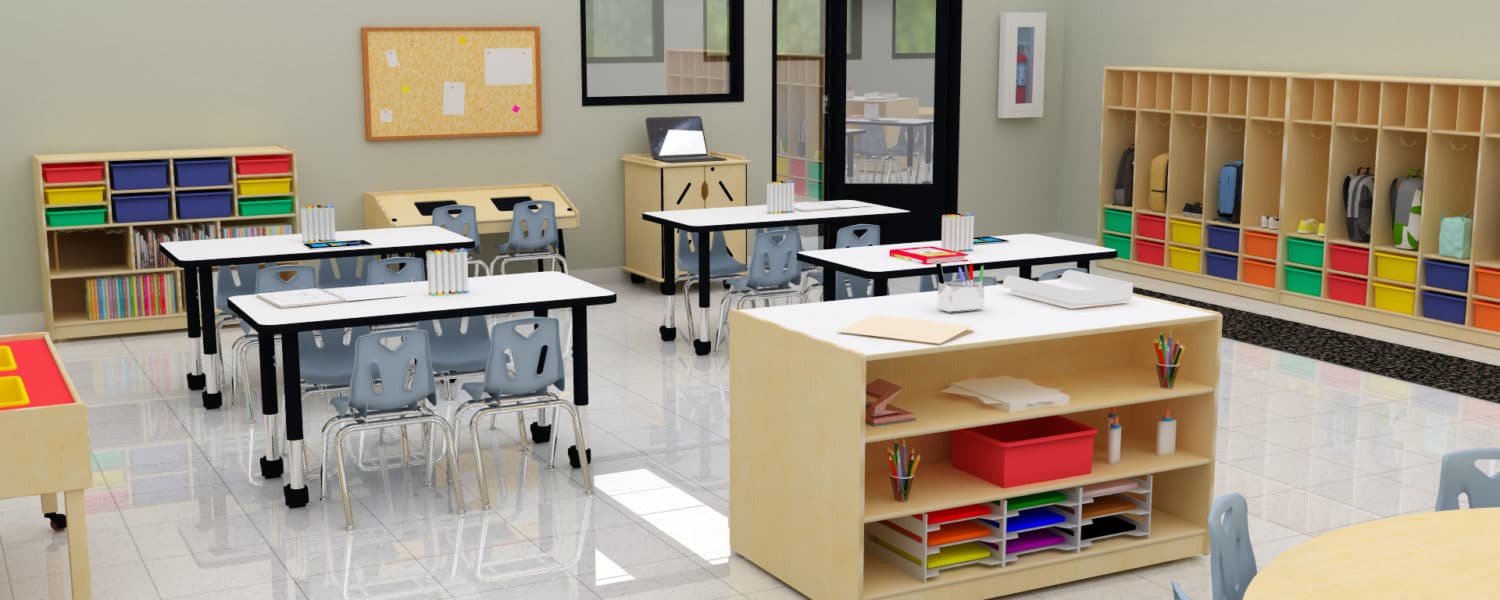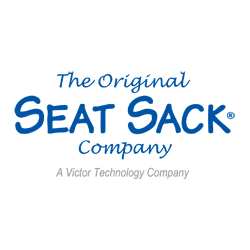By Melissa Potter
Reminiscing about the first days of kindergarten or elementary brings that familiar song back, the one that includes this line: “…we’re all in our places with bright shining faces.” What a difference a few decades have made.
As classroom teachers and instructional leaders have planned for the opening of schools in the fall of 2021, new priorities are front and center. Among them, and often at top of the list, are figuring out how to ensure physical distancing without disrupting classroom culture and community and keeping children safe—all while creating an all-important sense of belonging and excitement about learning.
Flexibility in Classroom Furniture and Design
For many early learning environments and elementary classrooms, open plans have already replaced the desks in rows. Classrooms have become hives for learning. And now they’re spaces that need to support quiet, independent reading; group projects; 1:1 time with teachers; technology access; whole class learning; and areas for collaboration, dramatic play, art, and even physical activities.
All together, traditional classrooms have a growing number of constantly evolving needs to accommodate. As educators and administrators look for answers, these six tips can serve as inspiration for redesigning, rearranging, and reprovisioning learning spaces to meet learning, safety, and budgetary needs.
Tip #1: Mobile Furniture for Optimum Flexibility
Classrooms, particularly those in older facilities, are often small. And even in settings where classrooms offer ample space, furniture with wheels and locking casters can make it easier and faster to rearrange in order to accommodate teaching and learning, as students’ and curriculum needs evolve. From creating ad hoc centers for small group and individual student activities to making “circle time” for the whole class easy to manage, mobile furnishings can help teachers streamline classroom setup and management.
Another consideration? Mobile furniture can help maintain optimum distance between students throughout the school day, and that supports critical health and safety protocols.
Tip #2: Modular Furniture Adds New Options for Room Configuration
Modular furniture can give educators even more choices for configuring classrooms, daycares, preschools, libraries, learning labs, and other environments. Tables that can move easily into circles, U-shaped configurations, or other small-group settings make it possible to adapt the “room” to the instructional need or activity at hand. It’s a great way to encourage collaboration when needed, and to make it easier for teachers to move easily around the room as students are working on their tasks and projects.
With added pieces—like modular storage units and makerspace centers—and special-purpose pieces—like sensory tables, easels, or dramatic play units—modular furniture and accessories make it possible to keep classrooms organized and provide the right environment for learning across the curriculum.
Tip #3: Multipurpose Furniture Saves Time, Money, and Space
Shelving that holds books, supplies, or bins. Storage units that have magnetic backs for additional work surfaces. Makerspace centers that include desk and writing areas for students. Activity tables that work for hands-on crafts and building projects and convert to writing areas with dry erase surfaces.
These are just some of the options that are now available in classroom furniture. They’re a great way to add functionality to corners or other classroom areas, that may be underutilized. When educators are looking for ways to support multiple activities and interactions among teachers and students, multipurpose furniture can answer these needs affordably.
Tip #4: Creative Storage Solutions Make a Big Impact
Classrooms are busy places, with all kinds of activities happening simultaneously. And each curriculum area typically requires its own sets of materials, equipment, and resources. Creative storage solutions can make a difference.
From mobile storage carts and shelving designed to hold a mix of bins, trays, papers, and folders—to compact lockers and coat storage that fit against wall spaces, new storage options continue to make organization, access to materials, and classroom management easier for both teachers and students alike.
Tip #5: Yes, Furniture and Accessories Matter for Health and Safety
Health and safety have always been top priorities for schools and early childhood centers, and now those concerns have grown even more critical. From basics like rounded corners and hinges that protect tiny fingers all the way to providing surfaces that can be cleaned and sanitized multiple times a day, classroom furniture plays a key role in keeping classrooms clean, safe, and healthy.
New innovations, like portable sinks that don’t require plumbing hookups, are answering the need for hygiene in the classroom and other early learning spaces. And as health requirements evolve and social distancing needs change, furniture, storage, and seating that can be reconfigured quickly will contribute to keeping classrooms open, accessible, and productive.
Tip #6: Rethinking Classroom Configurations and Design Is More Important than Ever
The days of students sitting in neat rows are rapidly fading. Circular configurations, special functional areas, team or group pods, and more are effective ways to plan classroom spaces.
Nick Schwarz, chief operating officer at Jonti-Craft, a Wabasso, Minnesota-based educational furniture manufacturer, noted, “Classroom design services and expertise have never been more important than now. Not only does this caliber of professional service help schools and educational organizations optimize their learning spaces, but professional space planners and architects are instrumental in adding the critical elements of health and safety into room design. And that’s essential in keeping school operating successfully for students, families, staff, and their communities.”
Where to Start
As educators in all types of learning areas continue to adjust, update, or expand their facilities, it’s always a smart strategy to consult with specialists in classroom design and furnishings.
Then, educators can compare plans and options, costs, and other safety and health considerations to arrive at the optimum approach to classroom designing and outfitting their spaces. Looking at other schools’ solutions, talking to colleagues, and gathering input from staff, students, and families can impact your design decisions, as well.
So yes, as the 2021-22 school year continues, all signs point to a great year of bright, shining faces…all in their places—at school— while learning and thriving.
Melissa Potter is the marketing and communications director at Jonti-Craft, Inc., a Minnesota-based company that has been providing learning spaces with educational furniture for over 40 years, www.jonti-craft.com.
















